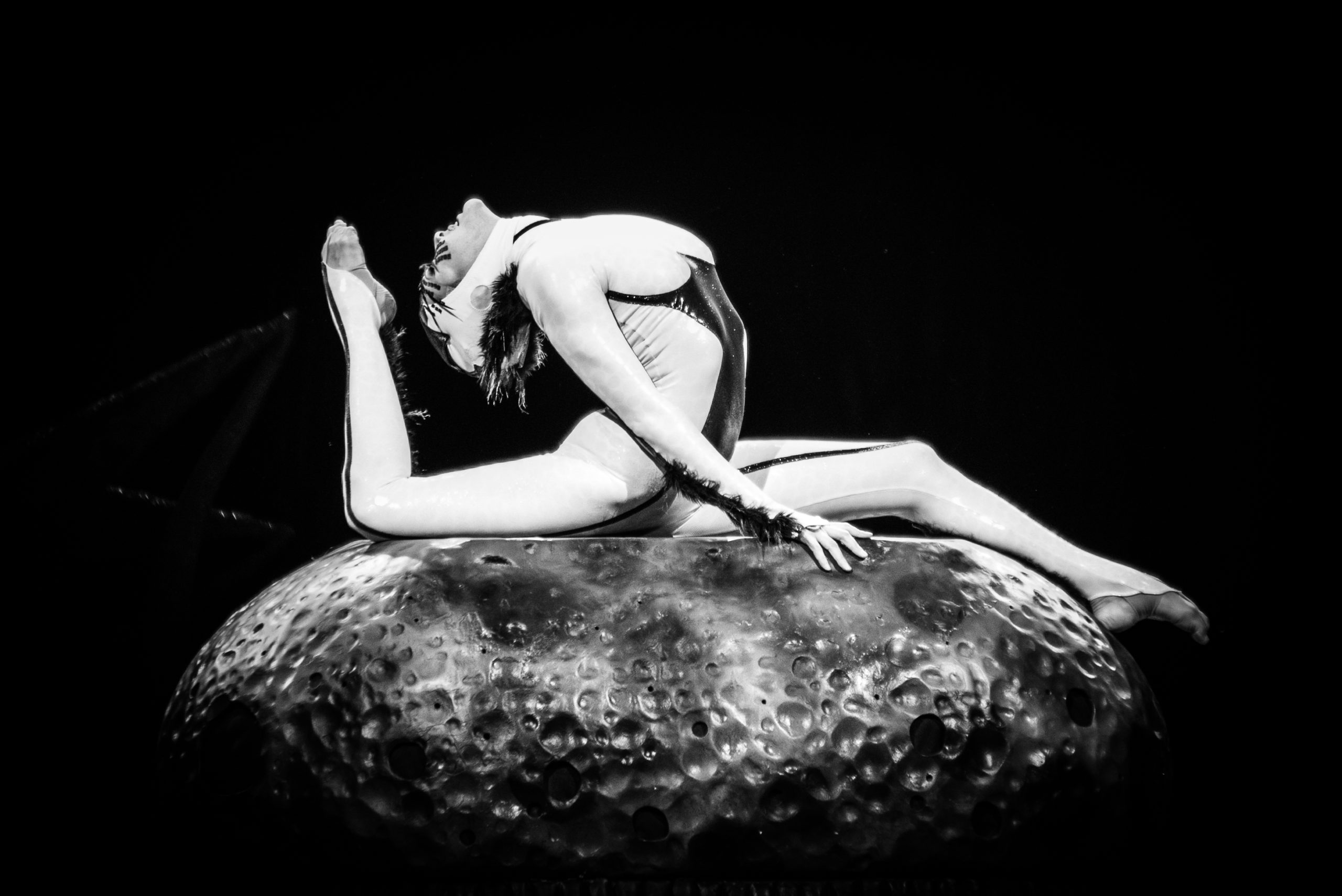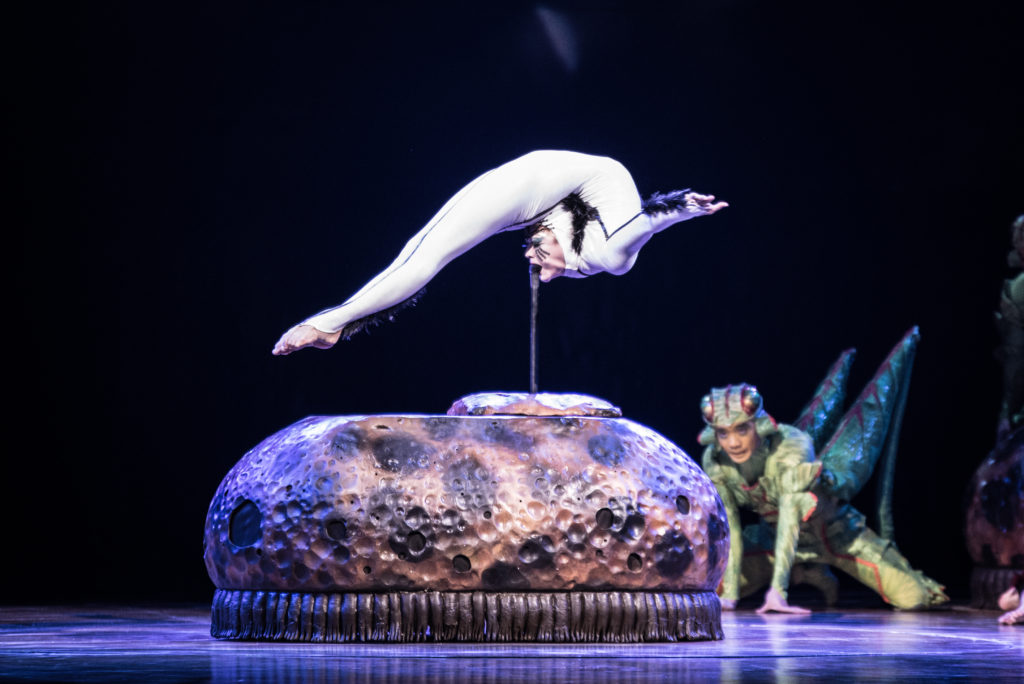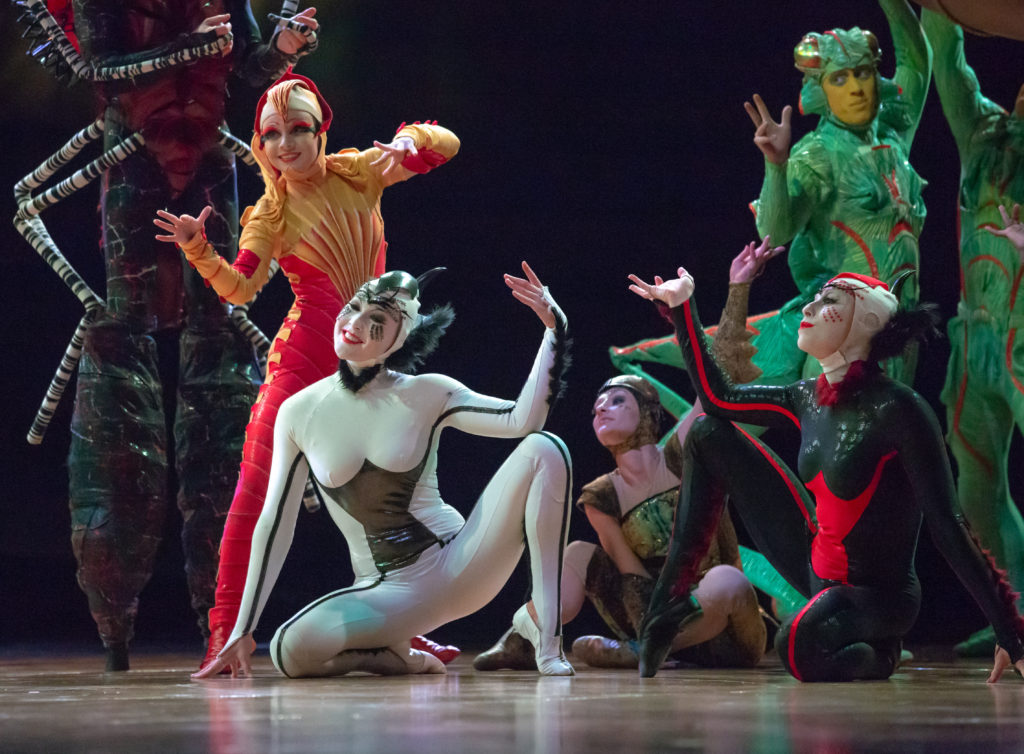Writer Joseph J. Airdo
Photography Courtesy of Cirque du Soleil
[dropcap]W[/dropcap]hen Aruna Baata first expressed her dream to become a contortionist to her father, he gently advised her to consider other circus skills.
“My dad always told me that maybe contortion would not be the best fit for me,” says Baata, noting that she is shorter than most contortionists. “He tried to change my mind. But I liked it so I wanted to try and I think that my trying to learn was much bigger than hearing his resistance.”
Despite his hesitancy, Baata’s father supported his daughter’s dream and began training with her at the age of 7. Two years later, she began performing contortion and adagio—partner acrobalance—with her father in a traditional circus in Brazil and throughout South America.
For many years, Baata was recognized as one of the best contortionists in Brazil. Now, the third-generation circus performer from Mongolia is showing off her contortionist skills in Cirque du Soleil’s touring production of “OVO,” which will be making a stop in Phoenix Feb. 20–23 at Talking Stick Resort Arena.
The show arrives around the same time that another Cirque du Soleil production—the brand new ice spectacle “Axel”—makes stops in Prescott Valley and Tucson.
Translated as “egg” in Portuguese and looking an awful lot like an insect’s eyes and antennae, “OVO” draws audiences into a colorful ecosystem where insects work, eat, crawl, flutter, play, fight and look for love all while Cirque du Soleil’s many talented acrobats move about the stage in the non-stop riot of energy for which they have come to be known.
Its cast is comprised of 52 entertainers from 14 countries performing 10 different high-level acrobatic acts, including foot juggling, Icarian games, hand balancing, aerial straps, slackwire, Russian cradle and—Baata’s expertise—contortion. The signature final act mixes trampoline, tumbling and rock-climbing.
Baata portrays White Spider, a character that the performer says is quite playful.
“White Spider thinks that she is the boss of the spiders,” says Baata, noting that there are three other spiders featured in the show. “She is the diva. In her mind, she thinks that she can tell the other spiders to do some mischief or be mean to the other bugs.”
More than 6 million people across 24 countries in North America, South America, Europe and Asia have seen “OVO” since its premiere in 2009. Baata joined the production in 2013 after first spending a few years hand-balancing on canes in Cirque du Soleil’s productions of Quidam and Saltimbanco.
Baata says that she had been involved with the circus for essentially her entire life but nothing could ever prepare her for the sheer intensity of performing in Cirque du Soleil.
The contortionist had put most of her circus duties on the backburner while she completed her high school and college education but her friends never stopped encouraging her to submit a video to the world-renowned entertainment company. She eventually did and, sometime later, she received a call inviting her to replace an injured performer.
That was more than 10 years ago.
“It goes by fast because you learn so much,” Baata says. “You change shows, you meet people, you make friends and you travel a lot. You get to go to places that you never thought you would go.”
Baata notes that her commitment to her craft started long before she received the call to join Cirque du Soleil. She explains that circus performers need to develop more skills than just their act itself from a very early age. Necessary strengths include hustling for gigs and wrangling contracts in a very competitive industry.
“Then you have to train very hard until you get to Cirque du Soleil,” Baata says. “After that, you still have to continue to train and develop your skills so that you can maintain your job because they keep hiring all of these talented people. You have to remain on top of your game.”
Baata acknowledges that being a Cirque du Soleil performer requires a lot of commitment—a commitment that basically becomes a way of life. Avoiding injuries and coping with a schedule that makes spending time with friends and family nearly impossible are simply life skills that a performer must perfect.
“Performing is your life,” Baata says. “Some people struggle with that because you have to give up so much of your routine to be in another completely twisted lifestyle on top of all of the training and performing. You have to have a lot of discipline.”
Baata has that discipline, though. It is what took her from her father’s initial good-intentioned reservations about her becoming a contortionist and delivered her to Cirque du Soleil’s stage.
“I think that anybody can be a contortionist if they start young,” Baata says. “Regardless if they are not really flexible or if they are super flexible and not really strong, I think that everybody has a chance. If you really want something and you are really committed to your dream, I think that you can achieve it.”
Baata continues to live out her dreams for which she has worked so hard. Even after spending a decade in Cirque du Soleil, the contortionist continues to find sharing the stage with so many other talented performers to be a surreal experience.
“I am surrounded by all of these talented acrobats and people,” Baata says. “Everything becomes normal to us after a while. But when I take the time to actually watch my colleagues perform and see their dedication to a completely different skill than mine, I become like anybody else watching.”
Baata adds that, as a Cirque du Soleil performer, she has the best seat in the house. Since she is afraid of heights, she is particularly blown away by “OVO’s” crickets as they bounce around the stage, throwing themselves from the production’s huge walls and returning to them in a perfect position.
“I cannot imagine ever doing that,” she says.
Cirque du Soleil: “OVO”
Feb. 20–23 | See website for times | Talking Stick Resort Arena | 201 E. Jefferson St., Phoenix | $44+ | 602-379-2000 | talkingstickresortarena.com









Comments by Admin